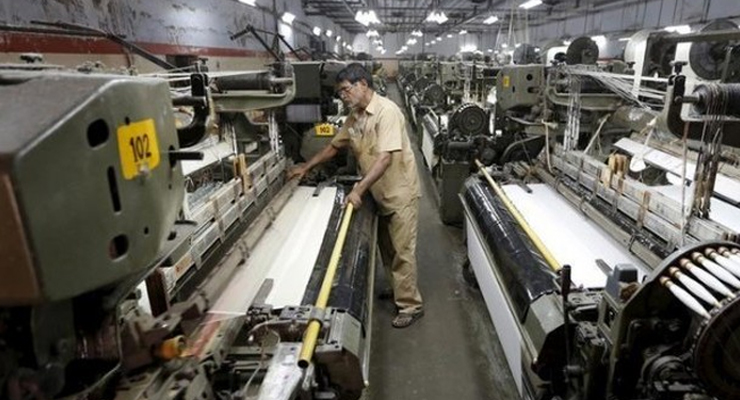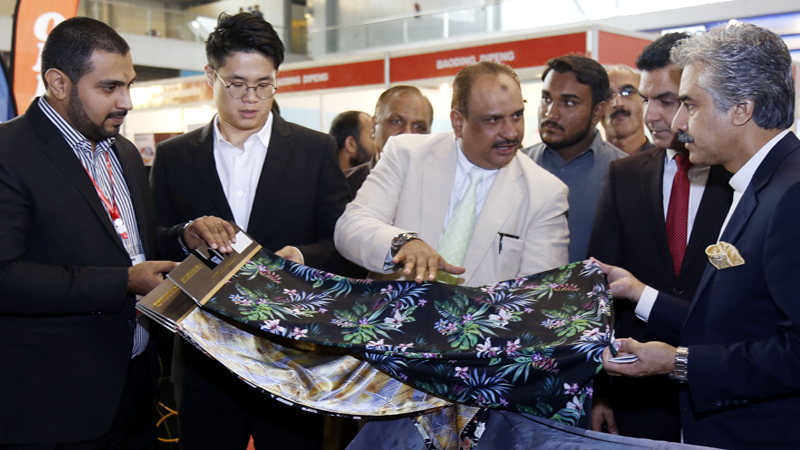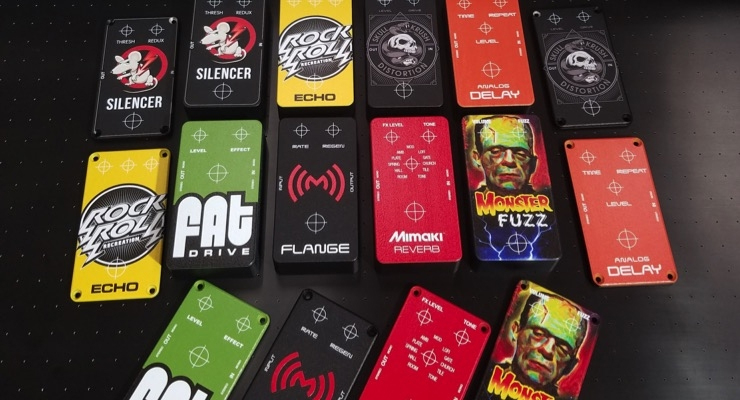
Digital printing will spark revolution in textile industry: LCCI
March 3, 2018
Three-day printing and signage tech expo begins
November 16, 2018Inkjet ink leaders discuss how the digital printing industry has evolved through the years.
Over the years, the printing industry has seen inkjet make sizable gains in many segments. From the early days of transactional printing to the widespread adoption of wide format, digital printing has moved steadily across the world of printing. Today, label and narrow web has had widespread adoption of inkjet technologies, an the ceramic tile market is almost all digital.
In “The Future of Digital vs. Offset Printing to 2022,” Smithers Pira’s Sean Smyth reported that digital printing accounts for 16.2% of the global print market value. In addition, digital printing accounts for 2.9% of volume, up from 2.1% in 2012, and Smyth anticipates it reaching 3.9% of volume by 2022.
In discussing these changes, ink industry leaders say that they anticipated digital’s growth, although some of the segments are different than they expected from five years ago.
Stephen Emery, VP of ink and new business development, EFI, noted that there has been quite a lot of momentum behind digital, adding that he does not believe the growth has exceeded market expectations in core applications like signage and graphics. He also sees many more markets transitioning over to digital.
“Certainly in ceramics, the level of digital decoration now compared with five years ago is very encouraging,” Emery added. “In textile, from an ink perspective, there are a lot of variables with regards to different types of inks used depending on the type of fabric printed or the end-use application of the job. But there has been tremendous growth in soft signage, and that’s a market where we have really developed a high-performing platform for signage providers adopting fabric printing with an aqueous ink that can be used in direct-to-fabric and transfer paper applications.
“Between the many different markets in play, it almost as if there is a crisis of opportunities with the number of applications customers have that need to transition to digital print,” Emery added.
Josh Hope, senior manager, Industrial Printing business development and marketing for Mimaki USA, said that even five years ago, the direction of wide format digital printing was clear.
“The distance we have traveled down that path has been pretty amazing,” added Hope. “We have seen customers take the advances in technology and further push the boundaries, which is very exciting to see. One of the most surprising applications has been the advent of full color 3D printing. We are still at the beginning of the technology curve and can only expect that the next few years will be impressive.”
“We are not surprised at the expansion within the digital market. However, there are a few applications including direct-to-object or direct-to-shape printing that have grown more quickly than anticipated,” said Jim Lambert, VP, GM – Digital Division, for INX International Ink Co.
“Outside of the sign and graphics market,” added Lambert, “the potential for growth in the digital printing market is tremendous.”
“It is always difficult to predict the exact penetration of a technology either in size or in timet,” Dr. Christophe Bulliard, marketing director, Sensient Imaging Technologies SA, said. “Nevertheless, we knew several years ago that digital printing could contribute to the development of new businesses and business models and that it would become really significant as soon as these models would be in place. A typical example is fast fashion, but there are many others. Interesting areas are where the digital printing itself offers more economical process than traditional methods include ceramic, color filters, etc.”
“Having been at the cutting edge of the digital inkjet chemistry for more than 25 years, the growth seen in recent times is in line with both SunJet’s and the market’s projections,” Peter Saunders, business director – Digital, SunJet, the inkjet division of Sun Chemical and DIC, observed. “Additionally, the growth in market sectors, such as packaging and textile, has been predicted for some time with many of the market moves being predictable due to the time it takes to build solutions and gain market approvals.
“Looking back over the last five years and possibly a little bit longer, the biggest surprises would have been the speed that the ceramic sector adopted digital, something which has arguably not been seen again since,” added Saunders. “In contrast to this, the speed of adoption of aqueous ink technologies in some sectors have been slower than we would have anticipated, but with gains in ink functionality, such as Aquacure, combined with printhead and printer capability, it’s certainly gaining momentum now.”
Don Duncan, former director of research at Wikoff Color, noted that explosive growth has been predicted for over two decades.
“I recall a meeting in the R&D department of a very large US ink company in 1995 when it was predicted that litho and flexo were only five years from complete demise,” Duncan added. “Litho and flexo are still with us, but that ink company is under different ownership. Perhaps the biggest surprise has been the adoption of digital printing as a supplementary tool, rather than a direct replacement for litho and flexo. While inkjet has seen impressive growth patterns, it is somewhat more conservative than original predictions. We see inkjet as a market with an upward growth trend and continue to invest resources to grow along with the market.”
“Having been a part of the graphic and industrial print industry for nearly 100 years, we are rarely surprised at the expansion of a new technology, and do our best to anticipate the changes,” said Rich Dunklee, global market segment manager – UV inkjet inks at Nazdar. “We have been working in inkjet for close to 30 years, and are pleased to be part of an industry that has worked very hard to increase the efficiency and productivity of inkjet equipment to get us to the state that we are seeing today.”
So what are the next technologies to make the switch to digital? Emery said that textile, packaging, flooring and thermoformable parts are of interest to customers.
“There are many industrial applications, such as fabric apparel and décor, that are rapidly adopting digital printing. Corrugated packaging is another industrial area where there is tremendous opportunity, as is wallcoverings,” said Emery. “There is a lot of upside in what EFI customers are doing using our thermoformable inks as well. Some of that work is in the signage space, but the inks’ ability to stretch creates additional opportunities in packaging, automotive and marine body parts, luggage – a whole range of product decoration uses that help redefine what digital print will be in the future. Beyond ceramic tile, there’s much more opportunity in industrial flooring such as wood and laminates and we are doing much more work on ink and printer platforms that can be used for that.”
Evan Benbow, director of R&D at Wikoff Color, said that he doesn’t anticipate digital printing to completely displace incumbent technologies, but does expect it to supplement existing print technique, particularly on non-flat surfaces..
“Digital printing can help converters keep up with the market trends of customization, just-in-time delivery and continuously shrinking run sizes,” Benbow noted. “With the addition of digital technologies, converters are able to service customers that they previously couldn’t. In addition to opening the door for shorter run lengths, inkjet’s biggest strength is the ability to print on non-flat substrates, where incumbent technologies sometimes struggle. Inkjet is making product decoration of unusually shaped items possible where it never was before.”
“Industrial printing – UV flatbed printing in particular – has very strong growth potential,” Hope said. “We are seeing more advancement into both the screen and pad printing markets by digital UV printing technologies.”
Dr. Bulliard observed that one of the key interests for the development of digital printing is the opportunities it opens in revising totally the supply chain of finished goods.
“It allows not only just-in-time and economical creation and delivery of variable (whether customized or personalized) designs, but also significant reduction of inventory by adding variable data of packaging print on the production line,” Dr. Bulliard said.
While Sun Chemical’s R&D team is working to advance its current inkjet technology, Saunders said it is unlikely that any one “incumbent” technology will be completely displaced by new developing technologies.
“The reality is that the inks used in all digital printing sectors are very different,” Saunders noted. “In fact, the substrates and requirements of ink performance are so different that
we have to have separate R&D groups working on the needs of each application. The common factor is that the inks all need to jet and function reliably, so the understanding we have gained of the influence of ink chemistry on the physics of inkjet printing is essential in all ink development.
“The digital value proposition continues to gain momentum as run lengths in many conventional print markets reduce,” Saunders added. “In addition to this, market trends continue to demonstrate the wish to reduce lead times and improve the efficiency of print processes against the backdrop of increasing numbers of products and levels of complexity. As a result, markets such as digital packaging and textiles continue to grow market share year on year.”



